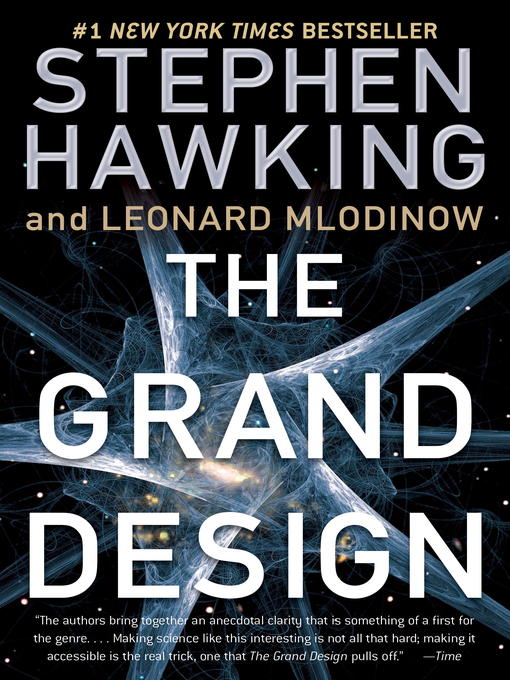
The Grand Design
کتاب های مرتبط
- اطلاعات
- نقد و بررسی
- دیدگاه کاربران
نقد و بررسی

December 20, 2010
Hawking, the renowned Cambridge mathematician, teams up with Mlodinow, a physicist at Caltech, for a brief introduction to "the grand design" of the universe. If this project seems ambitious for a four and a half–hour audio production, it is; however, even general readers will be able to follow along as the authors guide us through M-theories, quantum mechanics, general and special relativity, and other mind-blowing cosmological discoveries of the last century. The goal of all these journeys through the history of science is to answer some basic questions: why is there a universe in the first place? What other universes may in fact be possible, given Richard Feynman's theory of multiple histories? The audio version of this book is simple and scaled down. Despite an engaging and capable performance by West End stage actor Steve West, some listeners might long for more content—diagrams or video tracks to accompany and augment the lecture. A Bantam hardcover.

Starred review from July 26, 2010
The three central questions of philosophy and science: Why is there something rather than nothing? Why do we exist? Why this particular set of laws and not some other? No one can make a discussion of such matters as compulsively readable as the celebrated University of Cambridge cosmologist Hawking (A Brief History of Time). Along with Caltech physicist Mlodinow (The Drunkard's Walk), Hawking deftly mixes cutting-edge physics to answer those key questions. For instance, why do we exist? Earth occupies a "Goldilocks Zone" in space: just the perfect distance from a not-too-hot star, with just the right elements to allow life to evolve. On a larger scale, in order to explain the universe, the authors write, "we need to know not only how the universe behaves, but why." While no single theory exists yet, scientists are approaching that goal with what is called "M-theory," a collection of overlapping theories (including string theory) that fill in many (but not all) the blank spots in quantum physics; this collection is known as the "Grand Unified Field Theories." This may all finally explain the mystery of the universe's creation without recourse to a divine creator. This is an amazingly concise, clear, and intriguing overview of where we stand when it comes to divining the secrets of the universe. 41 color illus. throughout, 7 b&w cartoons.

August 1, 2010
The idea of the multiversethat the observable universe in which we live doesnt exist independently, apart from anything else, but is one member of an enormous collection of physically real universeshas been propagated to nonscientists by such physicist-authors as Michio Kaku (Parallel Worlds, 2004) and Leonard Susskind (The Cosmic Landscape, 2006). However laudable their popular-science efforts, Stephen Hawkings pitch of the multiverse concept likely will reach more readersnot solely due to his world-wide fame but also because of the efficiently precise, understandable, and lightly jesting prose of Hawking and coauthor Mlodinow (also a physicist and author). Posing simple, fundamental questions such as, Why do we exist? the authors employ word pictures, analogies to everyday experience, but (blessedly) no equations to convey the physics that are involved in the answer this book ultimately offers. Sympathetically noting that quantum mechanics and general relativity remain as counterintuitive to experts as to laypeople, Hawking and Mlodinow alight on the probabilistic nature of energy and matter, frames of reference, string theory, and the incredibly finely-tuned values of physical forces and masses that permit life to exist, combining their presentations into the propositions of M-theory about what initiated the big bang. Repetition of the multi-mega-copy sales of A Brief History of Time (1988) can be safely predicted; expect queues in stores and libraries for Hawkings latest parting of the veil to far-out physics.(Reprinted with permission of Booklist, copyright 2010, American Library Association.)

























دیدگاه کاربران